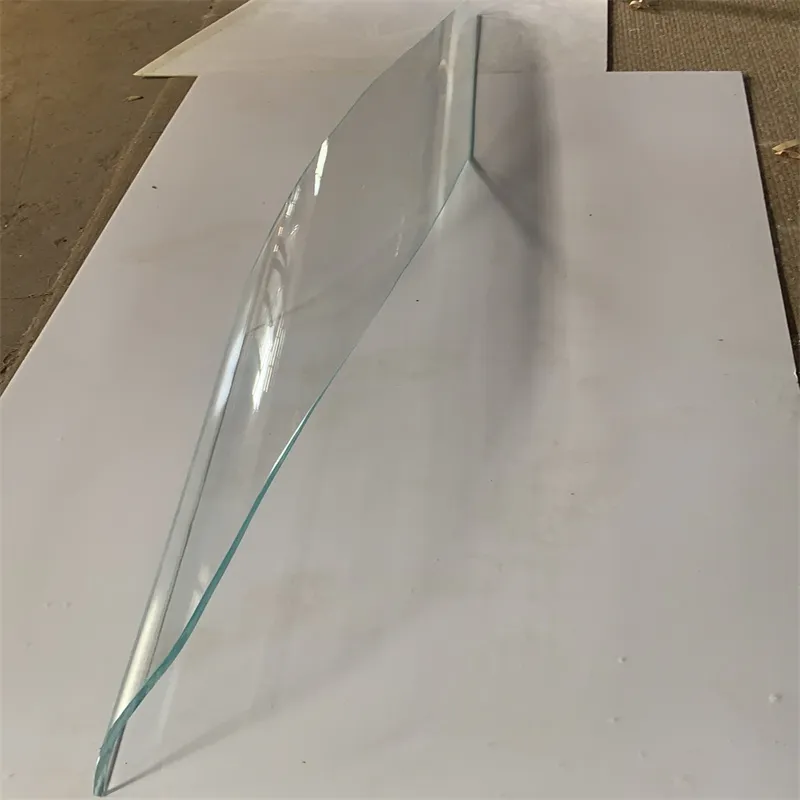Nov . 15, 2024 18:22 Back to list
laminated glass panels
Understanding Laminated Glass Panels A Modern Marvel in Construction
Laminated glass panels have emerged as a vital component in modern architecture and construction. Renowned for their superior strength, safety, and aesthetic appeal, these panels have revolutionized the way we think about glass in buildings, vehicles, and various other applications. This article delves into the composition, benefits, applications, and future trends of laminated glass panels.
What is Laminated Glass?
Laminated glass consists of two or more layers of glass that are bonded together with a layer of polyvinyl butyral (PVB) or other interlayer material. This construction method not only enhances the structural integrity of glass but also provides a safety feature that single-pane glass cannot achieve. When broken, laminated glass typically shatters but remains attached to the interlayer, significantly reducing the risk of injury from falling shards.
The Benefits of Laminated Glass Panels
1. Safety and Security One of the most significant advantages of laminated glass is its safety features. In the event of breakage, the glass fragments adhere to the interlayer, minimizing the danger to individuals. This quality makes laminated glass an optimal choice for locations prone to high foot traffic or in areas where safety is a paramount concern, such as schools and public buildings.
2. Sound Insulation Laminated glass also excels in sound insulation. The interlayer reduces the transmission of sound waves, making it ideal for urban environments or locations near noisy roads. The acoustic properties of laminated glass can help create a more serene atmosphere indoors, enhancing comfort for occupants.
3. UV Protection Laminated glass panels have the added benefit of filtering out harmful ultraviolet (UV) rays. This quality protects both individuals inside the building and the interiors, including furnishings and artworks, from UV-induced fading and damage.
4. Aesthetic Versatility From a design perspective, laminated glass is extremely versatile. It can be manufactured in various colors and finishes, allowing architects and designers to achieve stunning visual effects. The ability to incorporate prints, textures, or patterns within the interlayer adds a unique touch to design, creating eye-catching facades and features in residential and commercial buildings alike.
laminated glass panels

Applications of Laminated Glass Panels
The applications of laminated glass panels are vast and varied. In the construction industry, they are used in window systems, curtain walls, and glass doors. Their popularity has surged in high-rise buildings, where safety and sound insulation are particularly important. Additionally, laminated glass is being increasingly used in the automotive industry for windshields, where its safety features are crucial.
Notably, laminated glass is also utilized in the manufacture of glass flooring, skylights, and staircases. These applications benefit not only from the glass's structural properties but also from its aesthetic appeal, allowing for innovative and bold design choices.
The Future of Laminated Glass
As construction technologies continue to evolve, so too does the development of laminated glass. Advances in interlayer materials may lead to even better performance characteristics, including enhanced thermal insulation and further soundproofing capabilities. Moreover, sustainable practices are rising in importance, with a focus on producing laminated glass using recycled materials or those that offer greater energy efficiency.
The market for laminated glass is expected to expand as awareness of its benefits grows. With the ongoing trend toward urbanization and the increasing demand for sustainable building practices, laminated glass panels are well-positioned to play a pivotal role in the construction industry of the future.
Conclusion
In conclusion, laminated glass panels illustrate the perfect balance between safety, functionality, and aesthetics. Their ability to withstand impact, reduce noise, and provide UV protection makes them an invaluable addition to modern designs. As technology advances and the demand for innovative solutions continues to rise, laminated glass panels will undoubtedly remain a cornerstone of architectural development, shaping the future of the built environment.
-
Safety and Style with Premium Laminated Glass Solutions
NewsJun.24,2025
-
Reinvents Security with Premium Wired Glass
NewsJun.24,2025
-
Premium Float Glass Line for Modern Architecture
NewsJun.24,2025
-
Low Emissivity Glass for Energy-Efficient Architecture
NewsJun.24,2025
-
High-Performance Insulated Glass Solutions for Modern Architecture
NewsJun.24,2025
-
Elevates Interior Style with Premium Silver Mirror
NewsJun.24,2025
Related PRODUCTS














